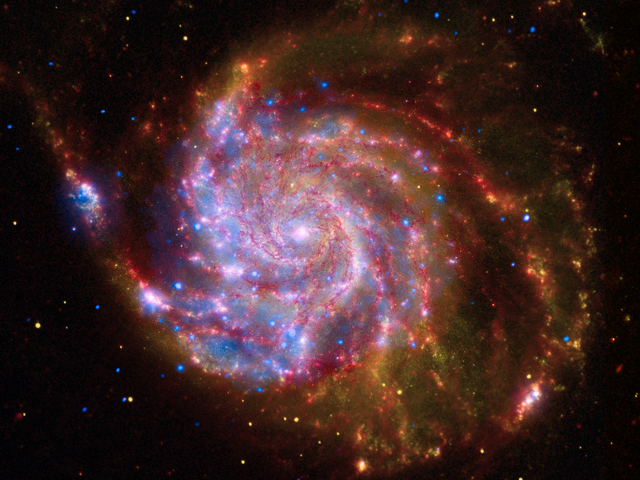Tricksy hobbit-sized black hole pretends to be a giant
Ars Technica » Scientific Method 2013-11-29

The brightness of a black hole depends on its mass and on its feeding habits. Although the body itself traps light, the matter being drawn into it is often raised to energies where it emits copious amounts of light. In some cases, the mass of the black hole can be inferred by how much light is emitted by this matter. Some extremely bright X-ray emitting systems, for example, are thought to be powered by matter in a disk of plasma swirling around a black hole hundreds of times the mass of the Sun.
However, a bright X-ray source in the Pinwheel Galaxy could complicate that picture. Ji-Feng Liu and colleagues found a companion star locked in mutual orbit with the black hole and used the star to determine that the hole is much less massive than is suggested by X-ray emissions. These results could have profound implications for other luminous X-ray sources, which are currently thought to be powered by intermediate mass black holes.
Black holes fall into two major categories based on their mass. As their name suggests, the stellar-mass black holes have masses similar to those of stars; the largest known is about 16 times the mass of our Sun, though they could theoretically grow significantly larger. These black holes formed from the collapsed cores of very massive stars. Supermassive black holes, which reside at the centers of most large galaxies, are millions or billions of times the mass of the Sun; we're not currently certain how those form.
Read 9 remaining paragraphs | Comments




